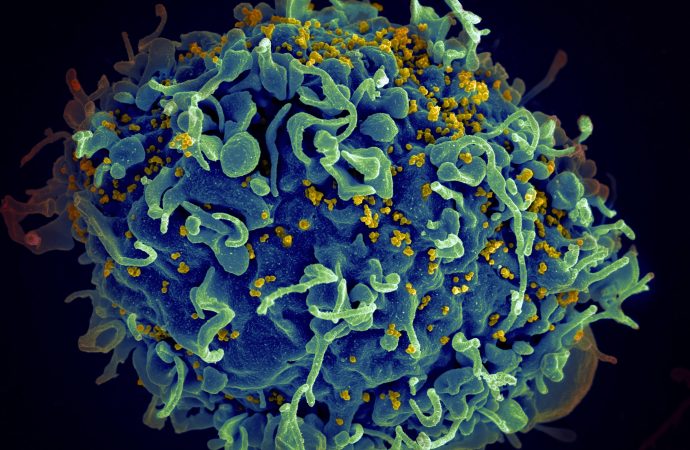The H.I.V. epidemic that spread across America in the 1980s was a nightmare that haunted countless lives and left behind an indelible mark on public health history. But amid this chaos, a bold program emerged as a beacon of hope for those affected by the deadly virus. Against all odds, it battled one of the
The H.I.V. epidemic that spread across America in the 1980s was a nightmare that haunted countless lives and left behind an indelible mark on public health history. But amid this chaos, a bold program emerged as a beacon of hope for those affected by the deadly virus. Against all odds, it battled one of the most terrifying diseases of our time and triumphed over adversity to save millions of lives. In this blog post, we explore how this incredible feat was accomplished and examine the legacy it has left behind for future generations to learn from and build upon.
The H.I.V. Epidemic in America
In the early 1980s, AIDS was first identified in the United States. While the disease initially primarily affected gay men, it quickly spread to other groups, including people who inject drugs and heterosexual women. By the mid-1990s, AIDS had become the leading cause of death for all Americans ages 25 to 44.
The federal government responded to the crisis with a series of aggressive public health measures. In 1987, Congress passed the Ryan White Comprehensive AIDS Resources Emergency (CARE) Act, which provided funding for medical care and support services for people with HIV/AIDS. The following year, the National Institutes of Health began funding research into antiretroviral drugs, which have been shown to be effective in treating HIV infection.
In 1995, the FDA approved combination antiretroviral therapy (ART), which uses a combination of drugs to attack HIV at different stages of its life cycle. This breakthrough treatment dramatically reduced death rates from AIDS and transformed it from a fatal disease to a chronic condition.
Today, there are more than 1.2 million people living with HIV in the United States. Thanks to advances in treatment and prevention, the annual number of new HIV infections has declined by more than 50% since the early 1990s. However, there is still much work to be done in combating this epidemic.
The Ryan White CARE Act
The Ryan White Comprehensive AIDS Resources Emergency (CARE) Act was first enacted in 1990 and has been reauthorized several times, most recently in 2009. It is the largest federal program dedicated to providing care and support for people living with HIV/AIDS. The act provides funding for a variety of HIV-related services, including primary medical care, HIV/AIDS prescription drugs, mental health and substance abuse services, dental care, housing assistance, and more.
In the early years of the HIV/AIDS epidemic, many people with the disease were turned away from hospitals and denied basic medical care. The Ryan White CARE Act was created to address this need by ensuring that people with HIV/AIDS have access to essential health care and support services. Thanks to this law, millions of Americans with HIV/AIDS have been able to get the treatment they need to extend their lives and improve their quality of life.
The Ryan White CARE Act has been an important tool in the fight against HIV/AIDS. It has helped to improve access to care for people living with HIV/AIDS and has also provided critical funding for research and prevention efforts. Thanks to this law, we have made great progress in our fight against this disease.
The President’s Emergency Plan for AIDS Relief
In 2003, the President’s Emergency Plan for AIDS Relief (PEPFAR) was launched as a bold initiative to combat the global HIV/AIDS pandemic. PEPFAR has saved millions of lives and transformed the response to HIV/AIDS around the world.
PEPFAR is the largest commitment by any nation to combat a single disease in history. It has provided life-saving antiretroviral treatment to more than 11 million people, prevention services to millions more, and care and support to millions of people affected by HIV/AIDS.
PEPFAR has also helped build strong national HIV/AIDS programs in partner countries, supporting their efforts to end the epidemic. As a result of PEPFAR’s work, new HIV infections have declined by 41% in 25 focus countries since 2001.
PEPFAR is a critical part of the U.S.’s commitment to achieving an AIDS-free generation. The program will continue to save lives and build on its successes in the years ahead.
The Impact of These Programs
The American public health system has been widely celebrated for its successes in battling the HIV epidemic. In particular, the aggressive and innovative prevention and treatment programs implemented in the early 1990s are credited with dramatically slowing the spread of HIV and saving countless lives.
These programs had a tremendous impact on the course of the epidemic. By providing access to condoms, clean needles, and education about safe sex practices, they helped to reduce new HIV infections. And by offering antiretroviral drugs to those who were already infected, they extended life expectancy and improved the quality of life for millions of Americans living with HIV.
Today, thanks to these groundbreaking programs, HIV is no longer the death sentence it once was. With proper treatment, people with HIV can now lead long, healthy lives. And while there is still no cure for AIDS, progress is being made every day towards that goal. The impact of these programs has been nothing short of miraculous.
What More Needs to Be Done?
The U.S. government’s response to the HIV/AIDS epidemic was swift and decisive. The President’s Emergency Plan for AIDS Relief (PEPFAR) was launched in 2003 and provided $15 billion over five years to fight the disease internationally. In the United States, the Ryan White CARE Act has been providing HIV/AIDS services since 1990.
Despite these successes, much more needs to be done in order to control the HIV/AIDS epidemic. In particular, there is a need for continued investment in prevention and treatment programs, both domestically and internationally. There is also a need for more research into new treatments and vaccines.
Prevention efforts must continue to be a priority. In particular, there is a need for more education about safe sex practices and needle sharing. In addition, condoms must be made more available, particularly in developing countries where they are often difficult to obtain. Treatment efforts must also continue, with a focus on getting people into care and providing them with the antiretroviral drugs they need to stay healthy.
Finally, there is a need for continued investment in research into new treatments and vaccines for HIV/AIDS. While significant progress has been made in recent years, there is still no cure or prevention method that is 100% effective. continued investment in research is essential to finding new ways to combat this disease.
Conclusion
The success of the Thai HIV/AIDS program and its achievements provide a glimpse into what can be accomplished when governments and communities come together to battle a disease. It is an inspiring example, demonstrating that with enough resolve even the most formidable public health challenges can be tackled. With this in mind, we must all continue to work towards protecting our societies from such epidemics by developing services that are tailored to each community’s needs and promoting responsible behaviors so as to ensure the safety and wellbeing of everyone.





















Leave a Comment
Your email address will not be published. Required fields are marked with *